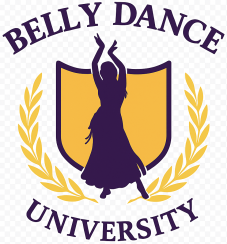Updated 10/18/2025
When I teach arm and hand work, I often remind students: the arms aren’t “extra.” They’re part of your body’s message. They float, they frame, they speak. I remember a class where one student’s arms looked stiff — strong, yes, but stuck. We slowed the music, I asked her to inhale, let her arms rise softly, then exhale as they descended, letting the fingers linger in space. The change was subtle but visible. Her whole posture softened, the movement looked more human and less robotic.
Here are six tips that help you build fluid arms and hands — not just for show, but so that your upper body moves with your whole self. (These ideas came from a technique-piece by Rosa Noreen.) Rosa Noreen’s Grace Academy+1
- Use your back muscles.
It might look like the arms are floating, but there’s real muscle support behind them. Keep your shoulders down, let your neck feel long. Instead of shrugging up, engage your lower trapezius (the muscle under your shoulder blades). That subtle lift keeps the arms supported without stiffness. I had a student who always raised her shoulders just by habit — when she felt that triangular muscle working instead, her arms moved over her head with ease. - Stabilize the lower trunk (pelvis + ribcage).
When your arms move and your core is loose, you’ll feel it. The pelvis should be neutral (not tucked under, not overly arched). Your ribcage should be steady. One drill I use: place a finger at your solar plexus, say “ha!” with a quick strong exhale — you’ll feel the front abs engage. Then walk through arm motions while maintaining that connection so your whole body becomes the support system. - Smooth transitions matter.
Fluid arms don’t jump abruptly. Finish one movement before the next begins. I had a performer who flicked her wrist and jumped to a new position — it looked sharp, yes, but disconnected. After we worked on giving the movement a tail (a slight linger of the wrist, fingertip, even shoulder), her armwork relaxed and the audience felt the continuity. - Hands and fingers deserve attention.
Your arms lead the energy, but your fingers finish the message. If your fingers are limp or your wrists droop, the motion is cut short. Try this: extend from shoulder → elbow → wrist → fingertip. Keep that line as one flow. Lift your knuckles slightly, open your palm’s underside, imagine creating space between bones. I often tell students: “Your fingers are like the edge of your dance. Let the tip say hello.” - Modulate movement timing.
Slow arm movement can show more than fast. If you take 8 counts to bring your arm from high to hip level, break it down in increments: after 2 counts you’re at diagonal high, after 4 counts side, after 6 counts low diagonal, after 8 counts contact. That planned timing gives your movement weight and clarity. In class we sometimes play a track at half speed so arms can stretch across time — the students visibly relax when we do that. - Breathe with your arms.
Breath is overlooked. If you hold your breath while your arms trace patterns, you’ll feel tension. I ask my students: inhale as the arms start to move; exhale as they finish their path. For slow flows, let each breath last through the arc. For accents or sharp changes, change the breath at the transition point. E.g., exhale just when your wrist flicks. One workshop ended with a quiet cool-down — students noted their arms “felt lighter” because they had let the air move in rhythm with their motion.
Let your hands speak
When you next stand in front of the mirror or in the studio, I invite you to try this: raise your arms slowly to high second or overhead. Feel your lower trap engage, your pelvis steady, your ribcage calm. Let your arms descend in a curve — fingers trailing, wrists soft, the last fingertip brushing an imaginary screen. Breathe out as you arrive. Pause. Let the air settle. Then lift again. Do that five times. Notice how your arms begin to feel different. That shift is real. Your arms are not decorations — they are storytellers.
